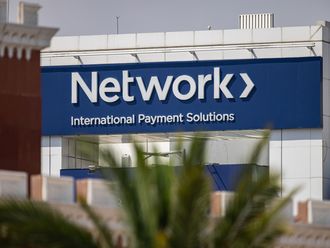London: The world’s largest banks are racing to meet a deadline next month when billions of dollars in new collateral requirements will begin to hit the over-the-counter derivatives market.
They’re testing systems for exchanging collateral for the trades, signing new legal documents and pursuing regulatory approval for models that could help blunt the cost of compliance, according to lawyers, executives and consultants helping firms meet one of the biggest changes in decades to the swaps market.
The hundreds of pages of restrictions taking effect are the result of years of deliberation by regulators around the world after the financial crisis when risk built up directly between traders. Global regulators estimate that the rules could eventually require more than 700 billion euros ($790 billion, Dh2.89 trillion) in cash, government bonds and other forms of collateral to protect against the threat that the default of one trader spreads risk to others and potentially throughout the financial system.
“This has been on the horizon for a while, but it was always going to be a challenging timetable and it’s just going to go right to the wire,” Deepak Sitlani, a London-based partner at Linklaters LLP law firm, said in an interview.
From the US to Japan, swap-dealing divisions of banks including JPMorgan Chase & Co, Morgan Stanley and Citigroup Inc, will have to start complying with the requirements on September 1. In Europe, regulators said they couldn’t meet next month’s global deadline and intend for the rules to take effect early next year, threatening to fracture the market.
Regulators in Singapore and Australia said on Monday that they would postpone the requirements. Singapore said the decision would help avoid unintended disruptions to financial markets and takes into account cross-border coordination issues and the level of industry preparedness. Neither country set a new deadline.
The Bank for International Settlements puts the size of the over-the-counter derivatives market at $493 trillion as of the end of last year. US regulators said firms would eventually need about $315 billion in initial margin to meet the requirements. Buyers and sellers of swaps in the EU market may need at least 200 billion euros, the bloc’s regulators said this year.
The actual cost of financing collateral would be smaller, though the US Federal Reserve has said it could still cost banks billions of dollars. The rules take effect for big banks first and will be phased in for smaller firms. Banks and their clients must exchange variation margin to offset risks during the life of a transaction starting on March 1.
“Final regulations from domestic regulators emerged relatively late in the day, in some cases less than six months before the scheduled September 1 start date,” said Scott O’Malia, chief executive of the International Swaps and Derivatives Association. “Given much of the detailed preparation and implementation couldn’t begin until final rules were published, this has meant a huge amount of complex work has had to be done in a very compressed time frame.”
One of the banks’ top priorities ahead of the deadline is to get approval to use a framework developed by ISDA, the industry’s main trade group, for calculating margin requirements instead of the one-size-fits-all method set by regulators. Banks would be able to adjust ISDA’s system, known as the standard initial margin model, to fit their specific situation.
ISDA has said that it is essential for banks to be able to use models because the amounts of margin required under the regulators’ method are too onerous. The Fed in its final rule said it expected banks to be able to rely on models and that the amount of margin would be $315 billion rather than the $3.6 trillion the industry estimated based on the regulatory method.
“You could easily be talking about the standardised numbers coming out as being very significant multiples of the SIMM results,” according to Nicholas Newport, managing director in London at InteDelta, a consulting firm that’s working with banks on the requirements.
In the US, bank regulators must approve some models before they can be used, while the industry-funded National Futures Association is in charge of reviewing other models. NFA said its reviews could take 90 days and include an on-site exam. The NFA doesn’t plan to disclose its decisions, though firms could tell each other if they’ve won approval.
ISDA is drafting standard legal documents for banks to comply with the rules. The rules have forced banks to have legal relationships with counterparties, set up accounts at custody banks where collateral can be deposited and seek opinions from law firms about contractual standards in countries around the world, lawyers said.
Parent companies
Many banks have multiple divisions that are registered in the US, each of which needs to set up new arrangements. European and Asian banks also have units that are registered in the US and may also need to meet the requirement even if their parent companies are headquartered abroad.
“Even between just two dealers, you could have a number of legal entity pairings that require an IM arrangement,” Sitlani said, referring to initial margin. “Multiply that out by the number of dealers subject to the rules and you quickly get to a lot of new agreements that need to be signed up.”
AcadiaSoft Inc, a Norwell, Massachusetts-based company owned and backed by the industry runs a system that is designed to help firms automate the process of managing collateral. Thirty financial entities are participating in the system and 700 people across the firms have been working on the project since the beginning of the year, said Chris Walsh, AcadiaSoft’s chief executive.
“The infrastructure is in place,” Walsh said in an interview. “But there is still a lot of on-boarding and testing.”












